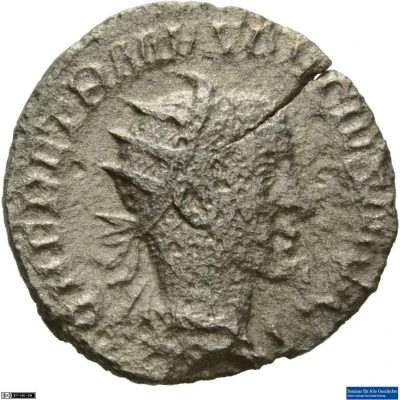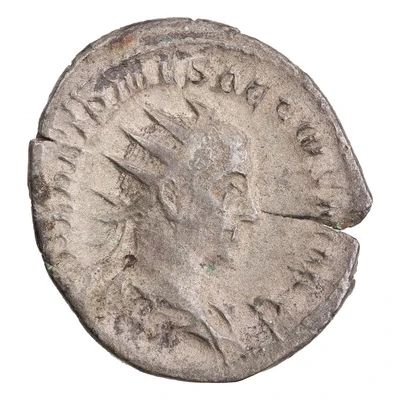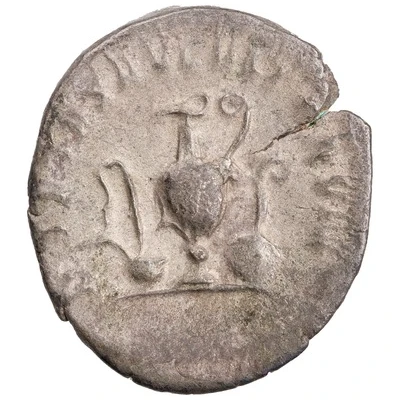


© Münzsammlung des Seminars für Alte Geschichte, Albert-Ludwigs-Universität Freiburg (CC BY-NC-SA 3.0 DE)
Antoninianus - Herennius Etruscus as Caesar PRINC IVVENT; Apollo
| Silver | 3.4 g | 20.5 mm |
| Issuer | Rome › Roman Empire (27 BC - 395 AD) |
|---|---|
| Emperor | Decius (Gaius Messius Quintus Traianus Decius) (249-251) |
| Type | Standard circulation coin |
| Years | 250-251 |
| Value | Antoninianus (1) |
| Currency | Antoninianus, Reform of Caracalla (AD 215 – 301) |
| Composition | Silver |
| Weight | 3.4 g |
| Diameter | 20.5 mm |
| Shape | Round (irregular) |
| Technique | Hammered |
| Demonetized | Yes |
| Updated | 2024-10-05 |
| Numista | N#282807 |
|---|---|
| Rarity index | 97% |
Reverse
Apollo, half-draped, seated left, holding branch in right hand and resting elbow on lyre.
Script: Latin
Lettering: PRINC IVVENT
Translation:
Principes Juventutis.
Prince of the youth.
Comment
Mass varies: 2.5–4.22 g;Diameter varies: 19–22 mm;
Example of this type:
Münzsammlung des Seminars für Alte Geschichte, Albert-Ludwigs-Universität Freiburg
Source:
Online Coins of the Roman Empire (OCRE)
Interesting fact
The Antoninianus coin featuring Herennius Etruscus as Caesar (PRINC IVVENT; Apollo) was minted during a time of great turmoil in the Roman Empire. The coin was issued in 250-251 AD, during the reign of Emperor Trajan Decius, who was facing numerous challenges, including invasions by barbarian tribes, plagues, and economic instability. Despite these challenges, the Roman Empire continued to produce high-quality coins like the Antoninianus, which showcased the empire's artistic and technological advancements.

